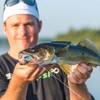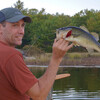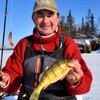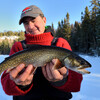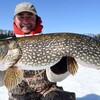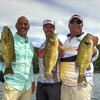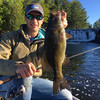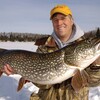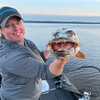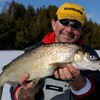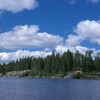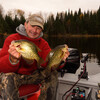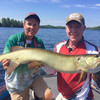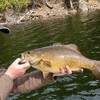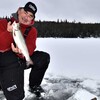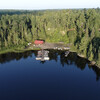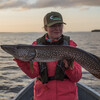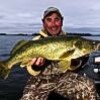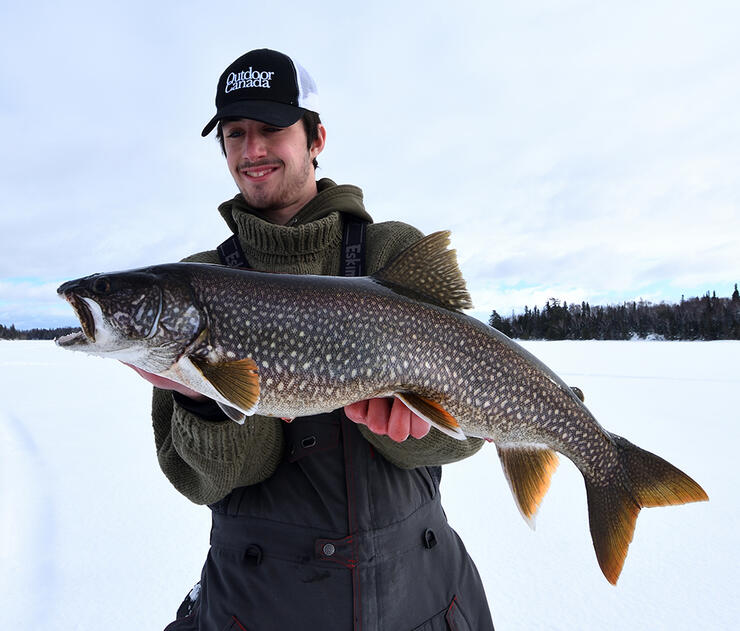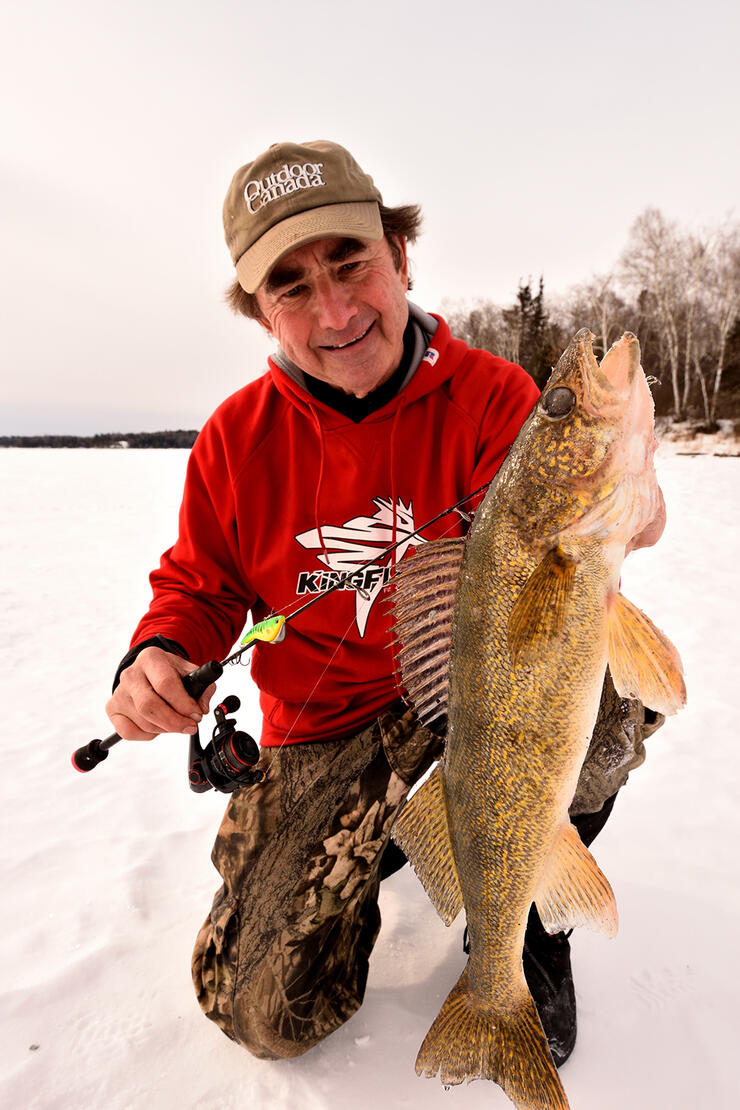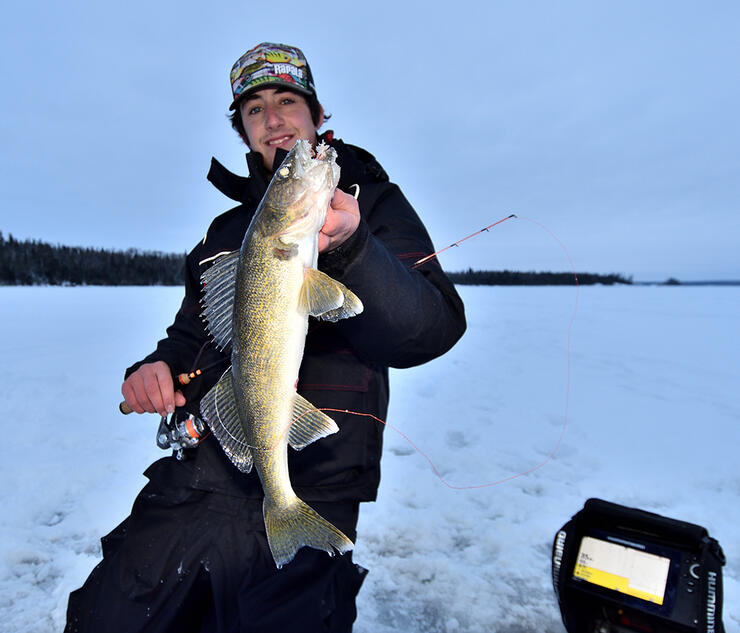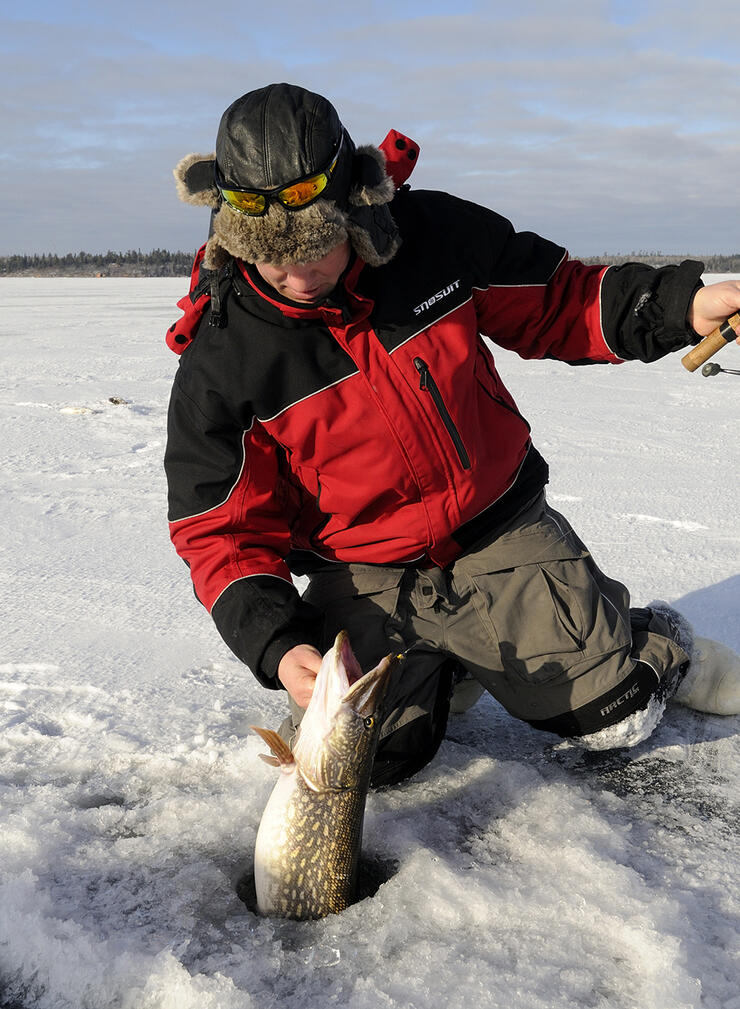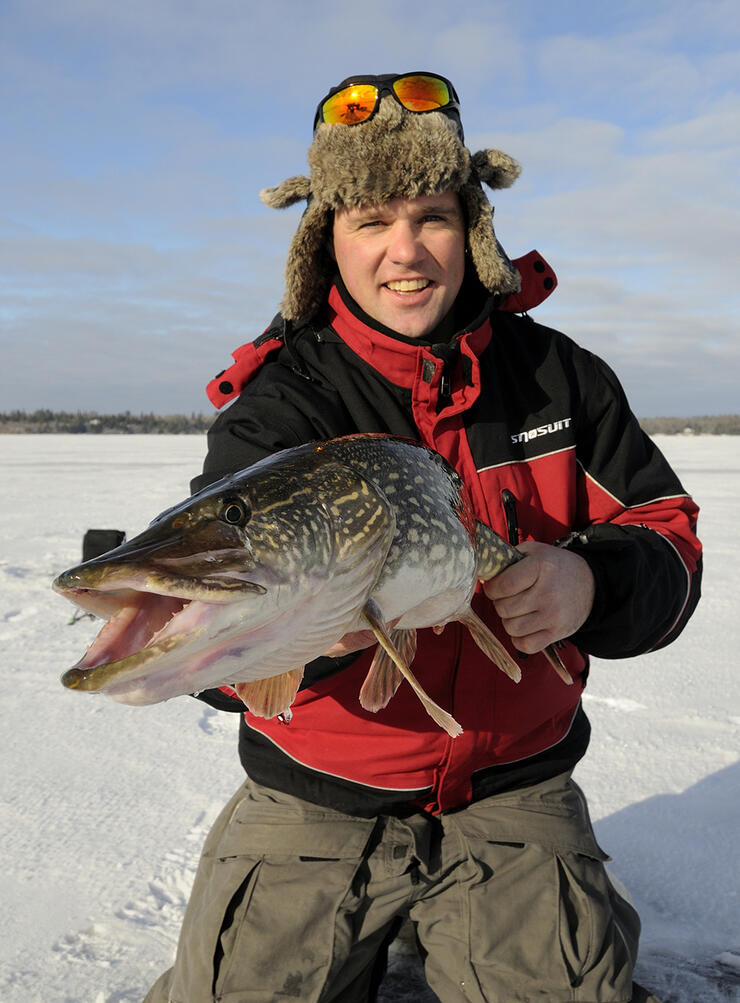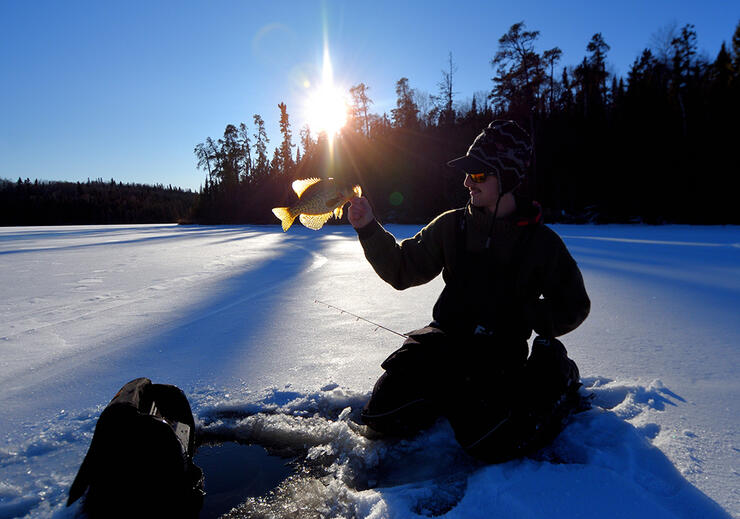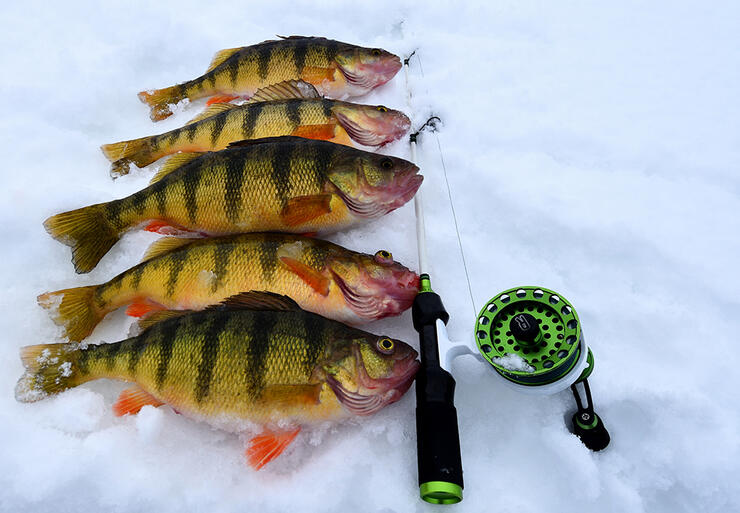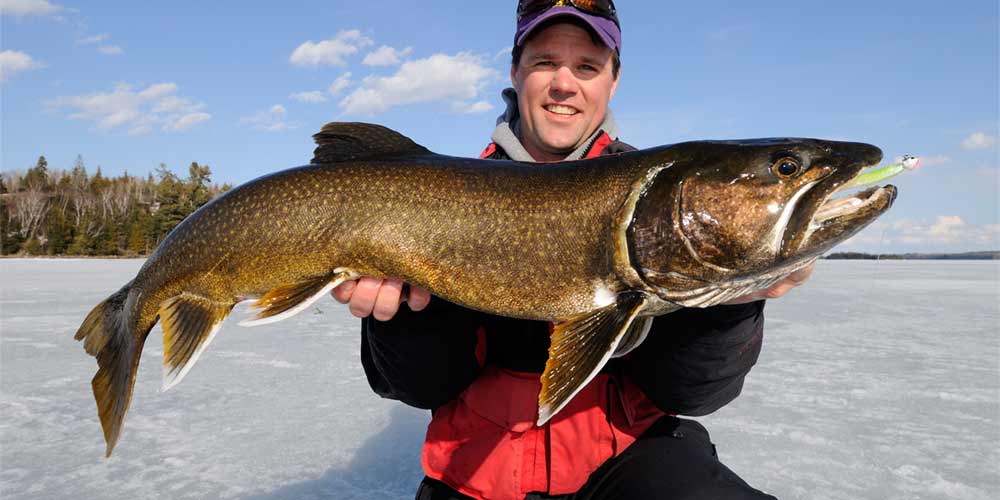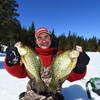
Rigged for Ice Fishing Success

When we last got together, I talked about why ice fishing is the fastest-growing segment of the sport and offered some tips on how to get started. I promised, also, that we'd continue the discussion and examine how easy and inexpensive it is to gather up the basic few rods, reels, lines, and lures you need in order to put plenty of walleye, whitefish, lake trout, northern pike, yellow perch, and black crappies on the ice this winter.
Lake trout
Let's begin the rundown with lake trout, arguably winter's greatest reward, as they grow big, fat, and sassy, strike baits with a vengeance, and fight like pit bulls.
Because of these characteristics—you could hook a trout weighing 20 pounds or more in Northern Ontario—you need to use a slightly longer and stiffer rod than for most of the other fish species. As a general rule, I like a 40- to 42-inch-long, medium-heavy or heavy-action ice rod with a relatively soft tip. The beefy butt section just above the reel lets you set the hook with authority, but the soft tip bends and controls the fish as it streaks up and down under the ice.
Pair your lake trout rod with an inexpensive 2,500 to 3,000 series spinning reel: remember, in the winter you are not casting, so you don't need the fancy features found on more costly open-water models. Instead, your ice reel simply holds the line and provides drag, or braking power, when you are fighting a fish. Spool it with a 12- to 15-pound test gel spun line like Sufix Ice Fuse and attach a 2-foot-long, 10- to 14-pound test Maxima Clear monofilament or fluorocarbon leader. You can use back-to-back uni-knots to attach the leader to your main line, but a small bead chain swivel is a much better idea as it eliminates line twists.
As for the best lures, I am willing to bet that more lake trout are landed every winter on 3- to 4-inch white and silver tube jigs stuffed with 1/4 to 3/8-ounce jig heads than all the other lures combined. It is fun to experiment with other presentations, however, so consider adding a few Rapala Jigging Raps, Acme HyperGlides, Williams Ice Spoons, and Freedom Minnows to your lake trout tackle box.
Walleye
While lake trout are prized for their size and fight, walleye are generally acclaimed for their table fare. Indeed, while we always release the bigger 'eyes, 18 inches and longer, even where the regulations don't require it, we also savour a few smaller 14- to 16-inch fish for shore lunch.
The same medium-heavy action rod and reel that you use for lake trout will serve you well for walleyes, especially in places like the Bay of Quinte where giants roam. But a slightly shorter 36- to 40-inch medium action rod will also work well. I spool my walleye reels with a quality 8- to 10-pound test gel spun line, adding a 2-foot long, 8- to 12-pound-test monofilament or fluorocarbon leader to the end.
And I tend to use three lures for the vast majority of my walleye fishing, starting with a small selection of 1/4- to 3/8-ounce ReelBait Flasher Jigs. Next up are #4 and #5 Rapala Jigging Raps and Acme HyperGlides, followed by a few 1/4 to 3/8-ounce Williams and Kastmaters spoons. You can tip these lures with live minnows, but I much prefer to use the head of a salted emerald shiner.
I should mention, too, that since you're allowed to ice fish using two rods in Ontario, a deadstick rod is a great second choice. As the name implies, you typically lay this rod across a pail, so the tip is directly over the hole.
You also want a slightly longer 40- to 42-inch rod for deadsticking, but more important than its length is its super soft parabolic action. This way, when a walleye sucks in your light jig and lively minnow, you’ll see the tip bend like a noodle, signalling a strike, yet creating little resistance.
Northern Pike
Many ice anglers use tip-ups for northern pike, but I enjoy running and gunning and jigging for the big toothy critters as well. When I do this, I rely on the same 40- to 42-inch heavy action rod that I use for lake trout, but I spool the reel with slightly heavier, thin diameter, 14- to 20-pound-test Sufix Ice Braid or gel spun line. And I always add a short tieable stainless steel leader.
My favourite pike lures are the largest #9 Rapala Jigging Raps (remove the bottom treble hook), Williams Whitefish spoons (replace the treble with a single siwash hook with a 4- to 6-inch white plastic grub or strip of sucker meat) and a soft-plastic Shift’R Shad swimbait on a ½-ounce long shank jig.
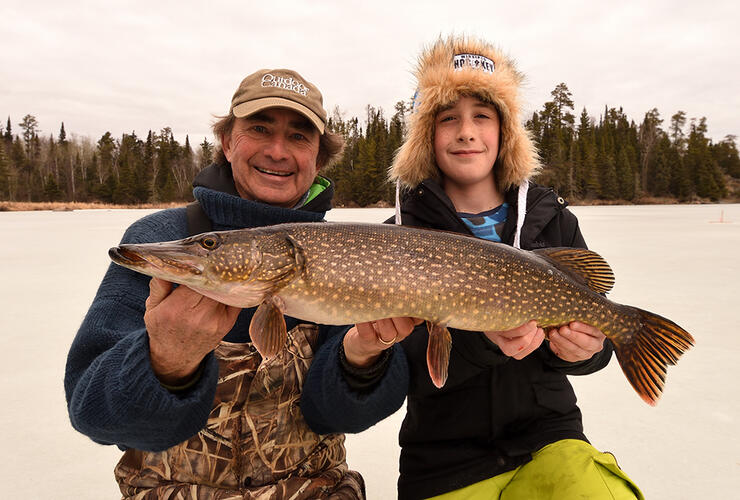
Yellow Perch, Black Crappies and Bluegills
Last, but by no means least, are the ever-loving panfish species—yellow perch, black crappies and bluegills—that are found in profusion across Northern Ontario. For these loveable creatures, you need to shorten and lighten up your tackle significantly.
A 30- to 36-inch, light-action ice rod coupled with a small 1000-series reel spooled with a 4- to 6-pound test Sufix Ice Fuse is perfect for pan fish. The noodley tip will signal bites, yet you will still have enough backbone that the rod won't buckle under the weight of a 2-pound fish. I also use back-to-back uni-knots to attach an 18-inch 3-, 4- or 5-pound test monofilament or fluorocarbon leader.
If panfish is the main pursuit of your ice fishing game, I would also urge you to look at the new inline single-action ice reels, typified by Fishing 13's Black Betty, that have revolutionized the way the winter game is played. They look like fly reels, but they have reel seats that let you grip your rod like a pencil. And because of the way you reel the line onto the spool it never twists, preventing the biggest fish turn-off (that being your lure spinning in circles as the line unravels).
Now, grab a few 4-mm and 5-mm tungsten jigs (Acme Pro Grade and HT Marmooska), a few of the smallest Kasmaster and Diamond Willow-type panfish spoons, and a selection of small soft plastic Mister Twister Micro Nymphs and Angler's Choice Crappie Fry and you will be shouting as loudly as you can... don't let winter end!
Recommended Articles
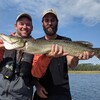
Proven Patterns for Giant Northern Pike
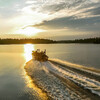
Luxury Meets Remote on Kenora’s Lake of the Woods
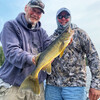
Fantasy Fishing For Walleye

Fly Fishing The Nipigon River: What To Bring
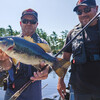
Smallmouth & Largemouth at Chaudière Lodge
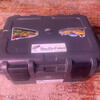
5 Travel Essentials When Fishing In Ontario
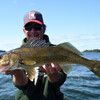
Heat Wave? Cold Front? No Problem.
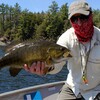
Fly Fishing for Bass
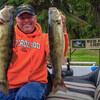
River Run Walleye
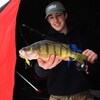
Beating the Blues
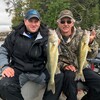
Agich's Kaby Kabins
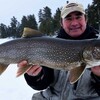
Winter Fish Scents
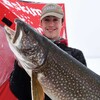
Weather or Not

Wilderness WAlleye
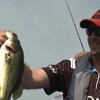
Elmhirst's Resort
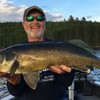
Hawk Lake Lodge
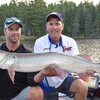
Tamarack Muskies
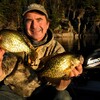
Sweeping the Basin
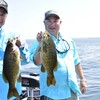
Delawana Resort
